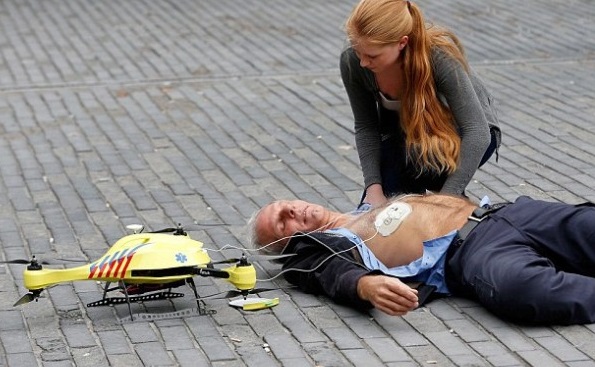
Watch any aspirin advertisement and you know that it’s a medical fact that the first few minutes during a heart attack are crucial for intervention and survival. So what might happen if a life-saving device could actually be flown to you – via drone – in only a matter of minutes?
That’s just what engineering graduate student Alec Momont, 23, has invented, and his “ambulance drone” has the potential to create major implications throughout the healthcare industry worldwide. Momont’s drone prototype is designed to fly at speeds of up to 60 miles per hour, and can carry nearly 9 pounds of weight (approximately the weight of a defibrillator).
Some staggering statistics:
• According to the Heart Foundation, heart disease is the number one cause of death for both men and women in the United States, claiming approximately 1 million lives annually.
• The Heart Foundation also states that more than 920,000 Americans will have a heart attack this year.
• The national average for the response time of EMS responders to the scene of an emergency is more than 9 minutes, according to the National EMS Information System. Momont suggests that the ambulance drone can get a defibrillator to a patient within a 4.6-square-mile radius within one minute. (Just think about the lack of traffic that an ambulance drone will run into versus an actual ambulance vehicle!)
So, how does the ambulance drone actually work? Using GPS technology, the drone can locate the site of an emergency situation by tracking emergency calls. After arriving at the scene of the incident, a behind-the-scenes operator assesses the situation and provides instructions to anyone helping the victim through the use of an on-board camera connected to a control room via a livestream webcam.
Momont, a student at TU Delft University, is focused on the Netherlands at this time, but knows that this technology could work throughout the globe. Emergency services in Amsterdam have already taken note of his prototype drone, which he anticipates could also carry oxygen masks and insulin injections in the near future.
For now, Momont is ironing out several critical details of the prototype, including honing the development of its steering mechanism as well as overcoming legal issues regarding the use of the ambulance drone. But his goal is to have an emergency network of ambulance drones operational throughout the Netherlands within the next five years.
And despite the hefty price tag — the drones are expected to cost approximately $19,000 — a device that can arrive on the scene of an emergency and save a life may just well be priceless.
Via Nerdoholic
Advertisement
Learn more about Electronic Products Magazine





